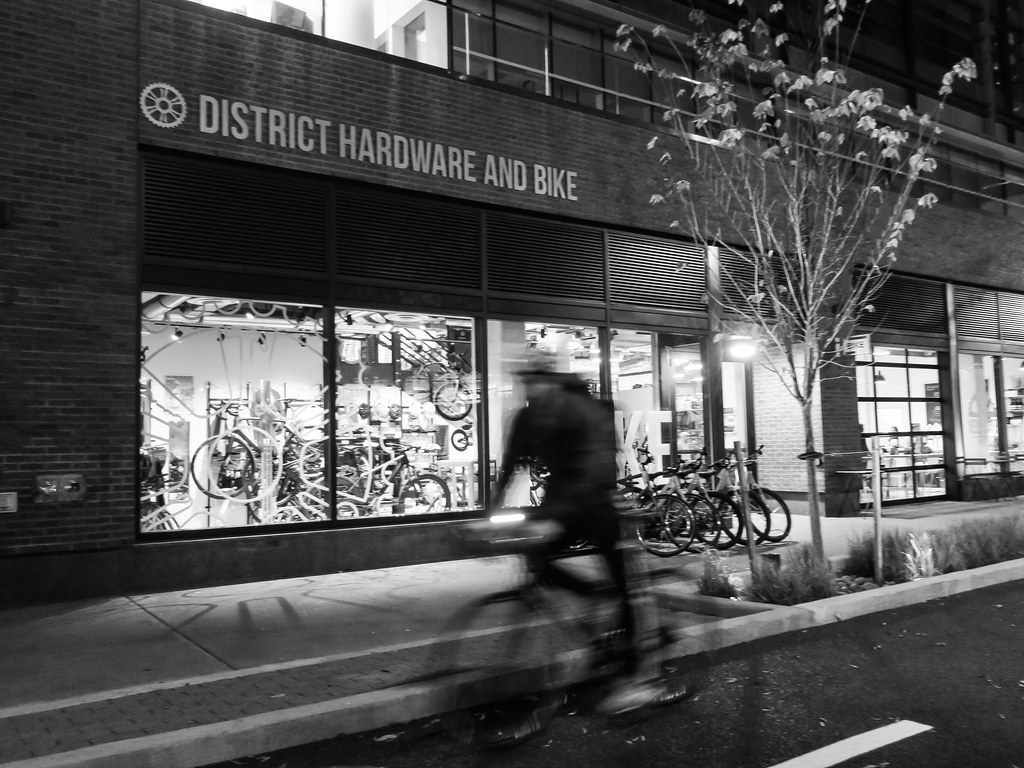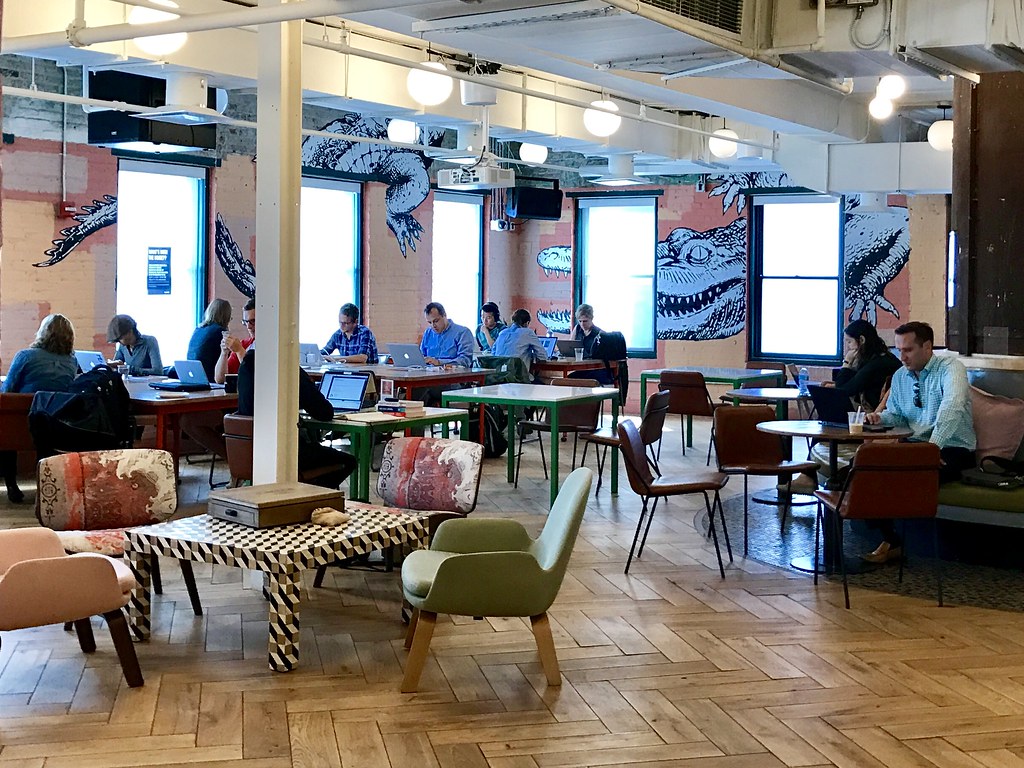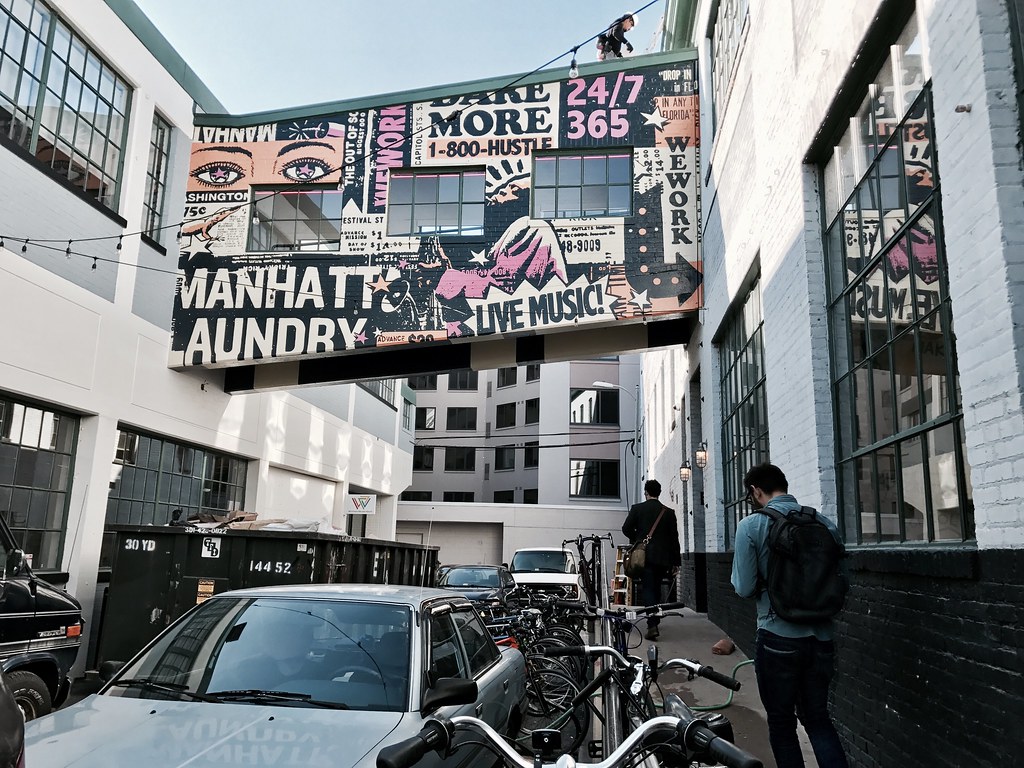After nearly fifty years in business, District Hardware & Bike closed last weekend.
Founded in 1971, this small business was where many Washingtonians bought their first bikes. For others, it was a convenient spot to pick up a hammer, a can of paint or a missing screw.
After the store moved to The Wharf in 2017, it became a neighborhood hotspot, adding a café that served coffee, snacks and a great selection of local beer.
The owners gave back to the community, by hosting local groups, including the monthly #BikeDC meetup that I was proud to attend. Velo Café also provided one of the few affordable places to have a drink in the upscale Wharf development.
Last weekend, neighbors gathered to mourn the loss of the beloved institution, filling the store one last time. One last chance to pick up any hardware needs before the opportunity disappeared from Southwest.
Death of a Small Business
District Hardware said that they didn’t get the foot traffic they expected. It’s a simple economic concept: not enough paying customers. Expenses exceeded revenues so they had to close. Couldn’t lose money forever.
Meanwhile, across the city, WeWork opened a new location at 1701 Rhode Island Avenue. This brand-new building, constructed where the old YMCA used to be, offers 104,000 square feet of space for coworking. In the past six months, WeWork also announced lease agreements for space at Dupont Circle, Midtown Center and K Street.
WeWork lost $1.25 billion in the last quarter alone. In response, CEO Adam Neumann was sacked. He’s walking away with a billion-dollar payout while WeWork employees face the prospect of layoffs.
I was taught that the market is rational. It is efficient. It is impersonal.
The market is ruthless when it comes to small business like District Hardware. Don’t make enough to cover your rent? You have to close.
WeHype
But investor-funded behemoths like WeWork can lose money by the billions and skate on, forever, it seems with the only consequence being bad press.
The venture capitalists who fund WeWork believe in disruption. WeWork is more than just office space; it is reinventing the way we work, live and play. When they first came to DC, I fell for the hype too, longing for an escape from cubicle nation.
The lesson of the sharing economy is to be careful what you wish for – WeWork is little more than an open office with free beer and snacks.
But why would investors pour money into a business that loses money, quarter after quarter, unless they believed in something beyond the balance sheet? They were sold a story by a new age snake oil salesman.
District Hardware, however, had to operate in the real world. They had no tale of disruption for investors. Grounded in the needs of customers, they offered real goods and services in an economy that values these things less and less.
WeWork and District Hardware were competitors. Both needed space in a city that lacks it. But one business was subsidized by dreamy venture capitalists content to lose money. The other had to make payroll.
The closing of District Hardware is a warning. How can small businesses in DC compete against lavishly subsidized fantasies like WeWork?
The Next Next Thing
The market is not rational, efficient or impersonal. Our city is being overcome by coworking not due to a business need but because venture capitalists said that it’s next new thing.
Do you want a locally-owned shop where you can get your bike fixed, pick up a lightbulb and have a glass of wine? Or do you want a rebranded cubicle farm owned by a money-losing conglomerate?
We get to decide what the city looks like. The time to act is now, before we lose another District Hardware.




